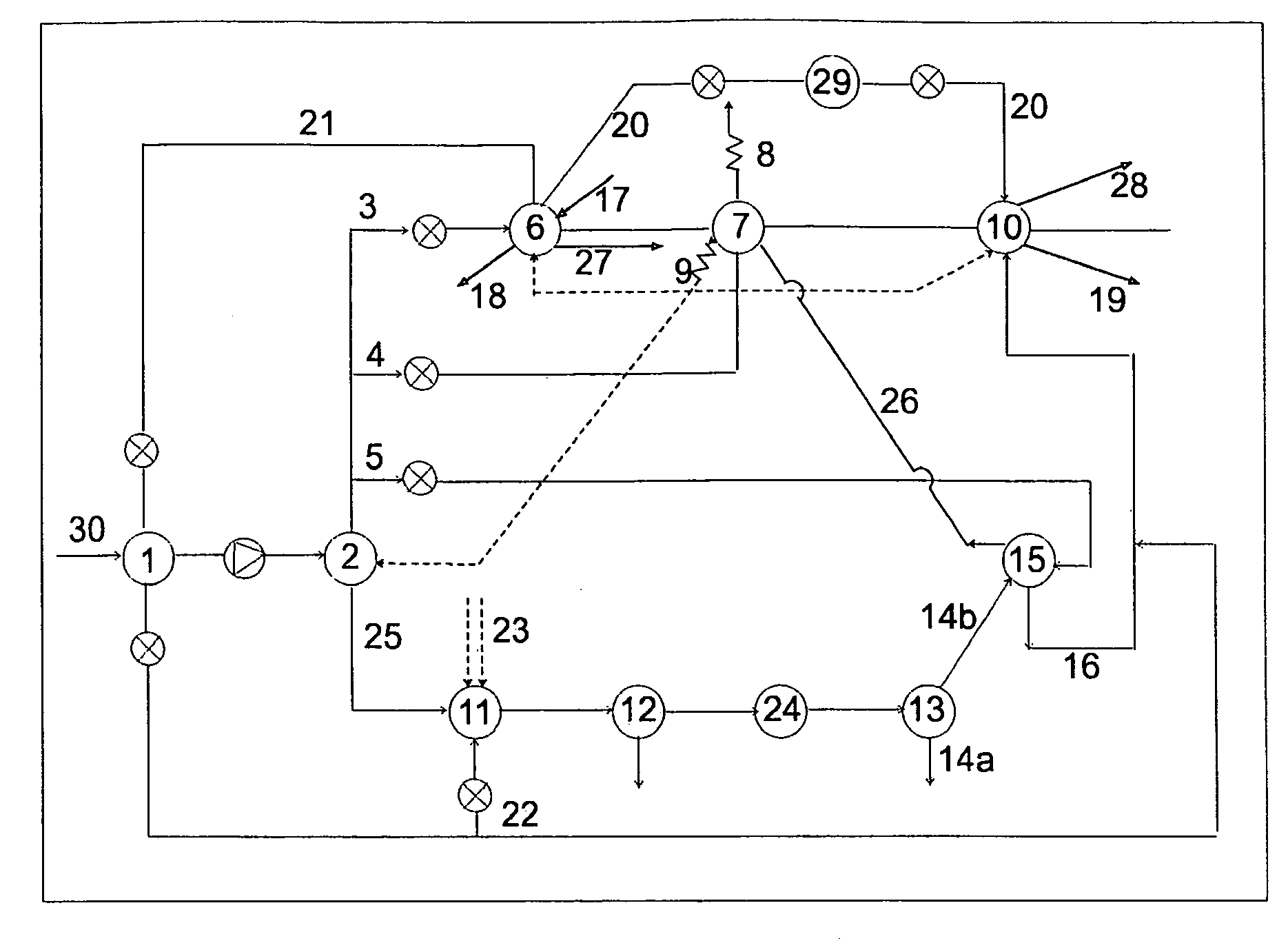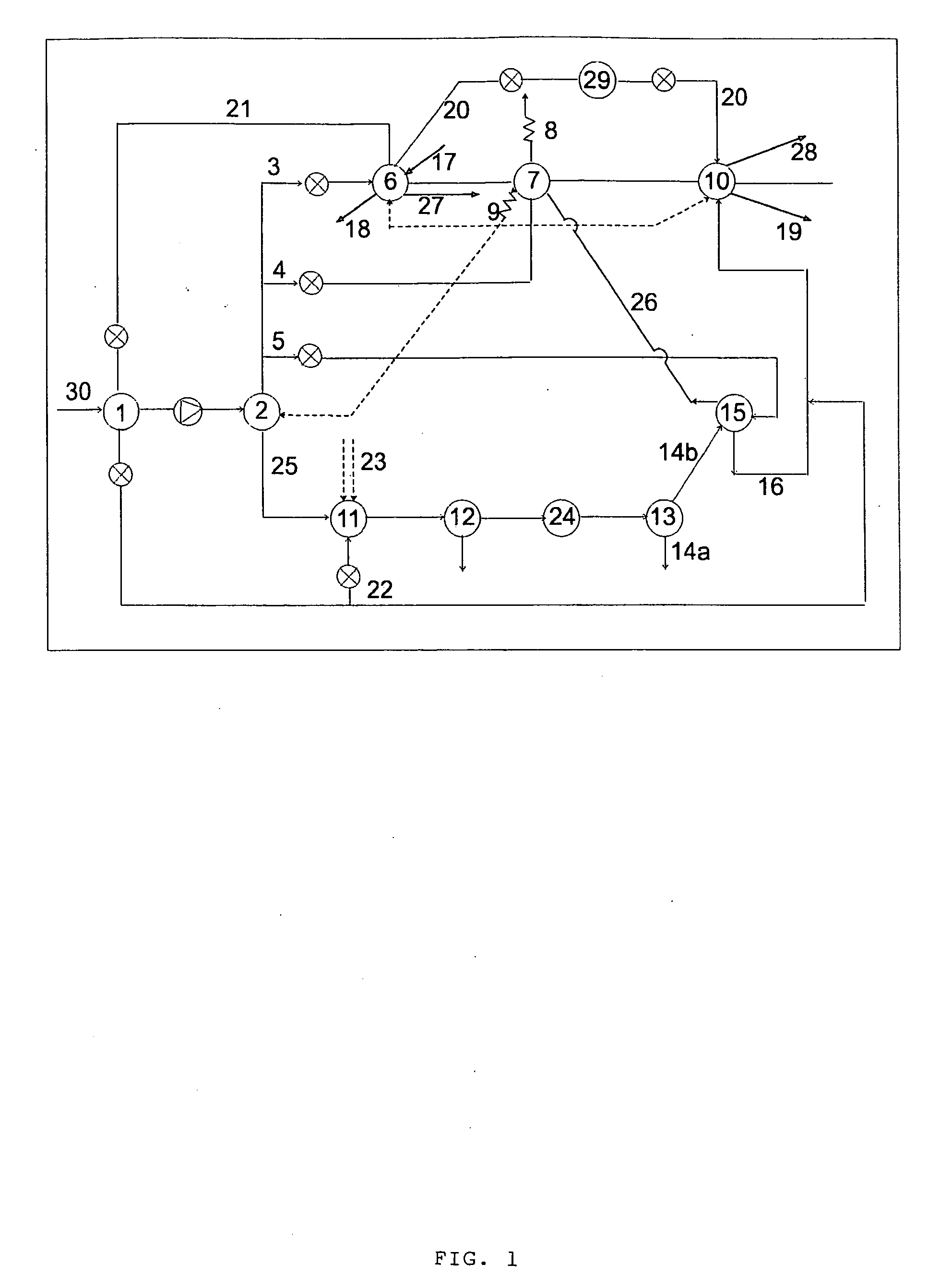Method of processing slops
a technology of slops and slops, applied in the field of processing slops, can solve the problems of slop disposal, complex slops, and significant affecting the environment, and achieve the effect of improving the energetic balance of the biogas production process and high demand
- Summary
- Abstract
- Description
- Claims
- Application Information
AI Technical Summary
Benefits of technology
Problems solved by technology
Method used
Image
Examples
example 2
[0023]An experimental fermenter for biogas production was fed by a type of mixed slops resulting from alternative processing of corn (bailey) and sugar beet molasses. The content of organic substances in an average sample of such slops was equal to 52 g CHSK / lslops. The fermenter loading was 5 gr CHSK / lfermenter / day. The fermenter useful volume was 50 l. The fementer is a cylindrical vessel made of stainless steal provided with a jacket heated by circulating water. The temperature of the charge was maintained at 40° C. The fermenter inoculum was obtained in Prague waste water clarification plant and was used at this temperature in the previous research programs. The fermenter was provided with a paddle wheel stirrer situated near its bottom section (four paddles, d / D=0.25 where d is the paddle diameter and D is the inner diameter of the cylindrical vessel). The rotation speed was 12 rpm. Slops were dosed into the fermenter together with usual nutrients 2 times per 24 hours. The ferm...
PUM
| Property | Measurement | Unit |
|---|---|---|
| pH | aaaaa | aaaaa |
| volume | aaaaa | aaaaa |
| temperature | aaaaa | aaaaa |
Abstract
Description
Claims
Application Information
 Login to View More
Login to View More - R&D
- Intellectual Property
- Life Sciences
- Materials
- Tech Scout
- Unparalleled Data Quality
- Higher Quality Content
- 60% Fewer Hallucinations
Browse by: Latest US Patents, China's latest patents, Technical Efficacy Thesaurus, Application Domain, Technology Topic, Popular Technical Reports.
© 2025 PatSnap. All rights reserved.Legal|Privacy policy|Modern Slavery Act Transparency Statement|Sitemap|About US| Contact US: help@patsnap.com


